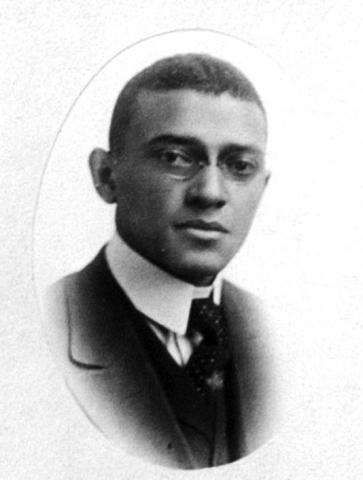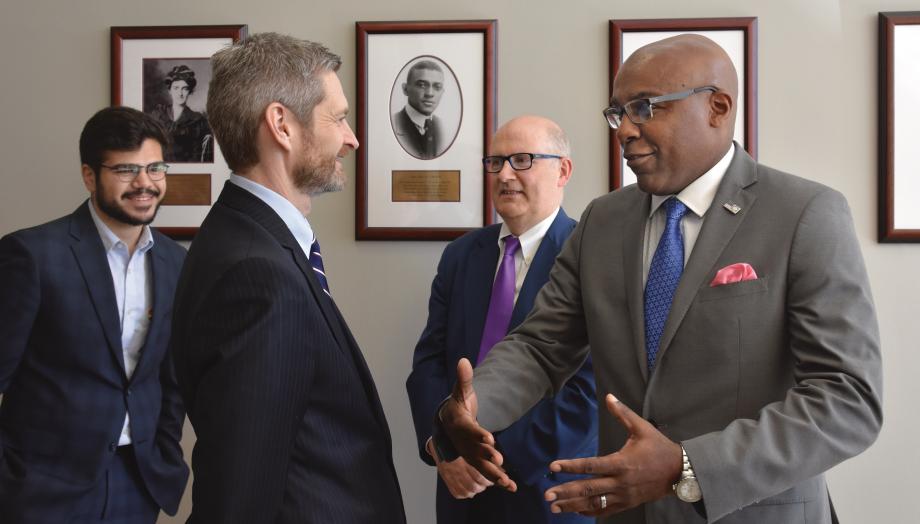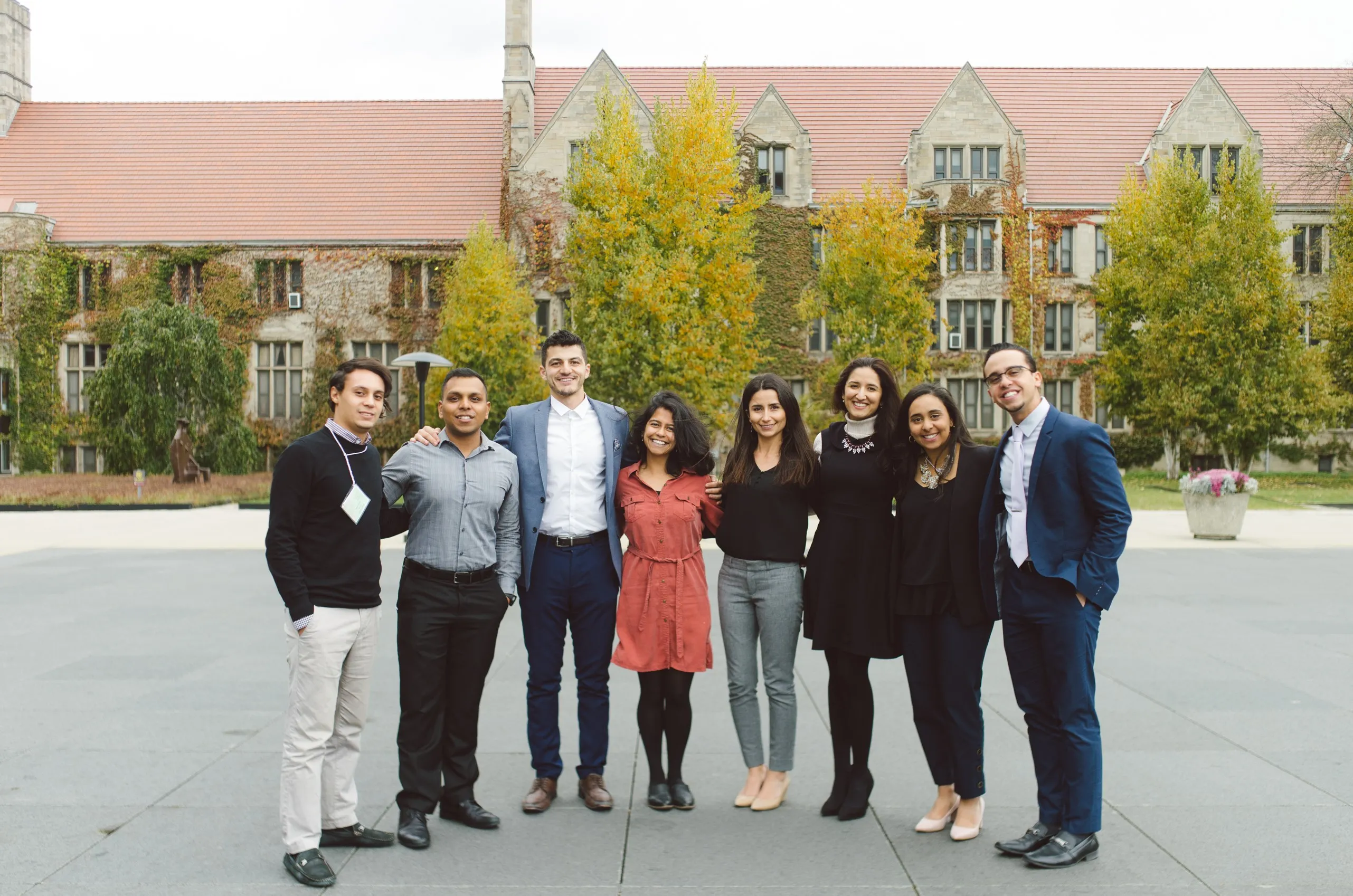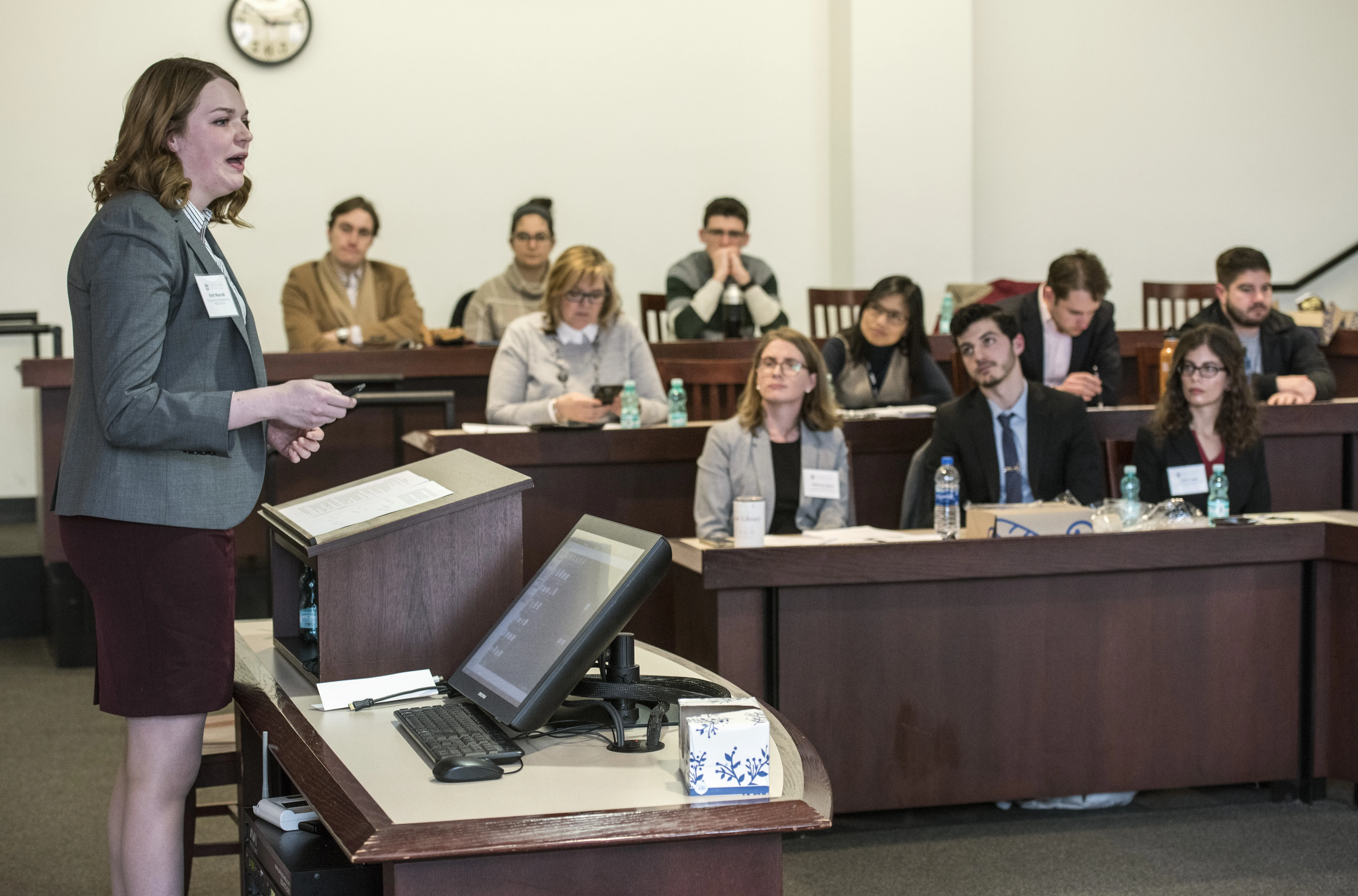‘Firsts Knock Down the Door’

As a member of the committee formed to commemorate the centennial of Earl Dickerson’s 1920 graduation, Adam Hassanein, ’21, spent much of his 1L spring break digging into the life and legacy of the midcentury legal giant who long had been known—correctly—as the first African American to earn a JD from the University of Chicago. It was a distinction so celebrated that, in recent decades, Dickerson had come to be known as the first African American to earn any type of degree from the Law School.
There hadn’t been any reason to question that broader understanding: the Juris Doctor, which eventually became the national standard as the first postgraduate law degree, has always been the most common degree at the Law School; the Law School, in fact, was the first in the nation to offer it. But last spring, something caught Hassanein’s eye as he sifted through old composites, hoping to gain insight on Dickerson and his classmates.
“I wanted to see what the Law School actually looked like in 1920,” said Hassanein, the vice president of the Law School’s Black Law Students Association. “I tried to figure out what they did with their lives. But when I got to the Class of 1918, I saw a face that stuck out, so I did more research.”
That face belonged to Nelson Morton Willis of Bogue Chitto, Mississippi—a Black contemporary of Dickerson’s who had earned a Bachelor of Laws, or LLB, in 1918, making him the Law School’s first African American graduate. (The two men entered the Law School a year apart and graduated two years apart; Dickerson’s education was interrupted by his service in World War I.) Willis had gone on to become a noted lawyer and civil rights advocate, serving as president of the Cook County Bar Association and the Chicago chapter of the NAACP and helping to shape American civil rights law through several significant cases.
The discovery was a surprise: Willis’s place in Law School history had faded with time, while Dickerson—whose fame outside Hyde Park also undersells his contributions—had become a well-recognized figure to decades of Law School students. Many studied his role in the US Supreme Court case Hansberry v. Lee or were aware that he’d established an endowment fund at the Law School. Whatever the reason—Hansberry, Dickerson’s Law School involvement, or simply that “first Black JD” eventually became “first Black graduate” after the school stopped offering LLBs—the Law School moved quickly to correct the record.
“We are so grateful to Adam for bringing this important finding to our attention,” said Dean Thomas J. Miles, the Clifton R. Musser Professor of Law and Economics. “Thanks to his sharp eye and thorough investigation, Mr. Willis has been restored to our collective memory. His pioneering career is an inspiration to all students.”
In October, the Law School dedicated an official photograph of Willis inside the Law School’s classroom hallway. Illinois Attorney General Kwame Raoul, joined by Miles, Hassanein, and Deputy Dean Richard McAdams, told members of the Law School community that he hoped they would view Willis’s legacy as a “road map” for their own personal histories.
“It’s important to recognize firsts,” Raoul said. “Because firsts knock down the door and show you what’s possible for others who follow.”
Willis was born on June 6, 1889, in Raymond, Mississippi, the son of a rural schoolteacher. Willis ran away from home when he was 14 and worked his way through what is now Tougaloo College, a historically Black liberal arts college near Jackson. After graduating from Tougaloo—on whose board Willis would serve for decades—he arrived at the University of Chicago in September 1914, just a dozen years after the Law School’s founding. Willis supported himself at the Law School with odd jobs and by working as a railroad porter.
His graduation came just 22 years after the US Supreme Court upheld the constitutionality of racial segregation in public accommodations in Plessy v. Ferguson and 36 years before the Court’s first decision in Brown v. Board of Education, Miles noted at the dedication ceremony.
“To have chosen to dedicate himself to a career in law, [Willis] must have had tremendous faith and hope in law and the legal system,” Miles said.
After graduating from the Law School, Willis began his career in Louisville, Kentucky. He returned to Illinois in 1931, practicing in Chicago and Danville. Willis’s clients included minority railway workers and falsely accused criminal defendants.
In a closely watched test case with national implications, Willis represented an African American woman who was prohibited from trying on a hat at a department store in Lincoln, Illinois. At trial and on appeal, Willis successfully defended the constitutionality of an Illinois civil rights amendment that had been the first in the nation to make department stores subject to a civil rights law.
As president of the Cook County Bar Association, Willis—working alongside Dickerson, who was president of the National Bar Association at the time—spearheaded initiatives seeking the election of African American judges in Cook County and systemic reform of the judiciary. During his tenure as president of the Chicago chapter of the NAACP, Willis litigated the segregation of public schools in Illinois and served—again, with Dickerson—on the chapter’s Legal Redress Committee. Willis also worked alongside future Supreme Court Justice Thurgood Marshall during the representation of Chicago NAACP attorneys (including future federal judge George Leighton) who had been charged with inciting the 1951 Cicero race riot.
Willis moved to Lake County, Michigan, in 1957, where he was subsequently appointed to serve a two-year term as the county’s prosecuting attorney. Willis died in Michigan in May 1967.
Hassanein worked alongside Sheri Lewis, director of the D’Angelo Law Library, and Law School librarian Bill Schwesig to research Willis’s career. Hassanein, for his part, is glad that Willis is being recognized and remembered.
“To go through the troubles that [Willis] did to get an education is really remarkable,” Hassanein said. “I’m thankful for the Law School’s response.”
Willis’s photograph can be found outside Room V, alongside those of Dickerson; Sophonisba Breckinridge, 1904 (the Law School’s first female graduate); Jewel Lafontant, ’46 (the Law School’s first African American woman JD graduate); and Lafontant’s husband John W. Rogers Sr., ’48, a member of the Tuskegee Airmen during World War II.
At the unveiling, Miles said he hopes the Willis photograph will remind students what the legal system can accomplish—and what they can achieve with their Law School education. Quoting historian and former University professor John Hope Franklin, Miles underscored the importance of Willis’s story and the day’s events.
“Good history,” Miles said, “is a good foundation for a better present and future.”
* * *
This story was originally published in October 2019 and expanded in April 2020.






